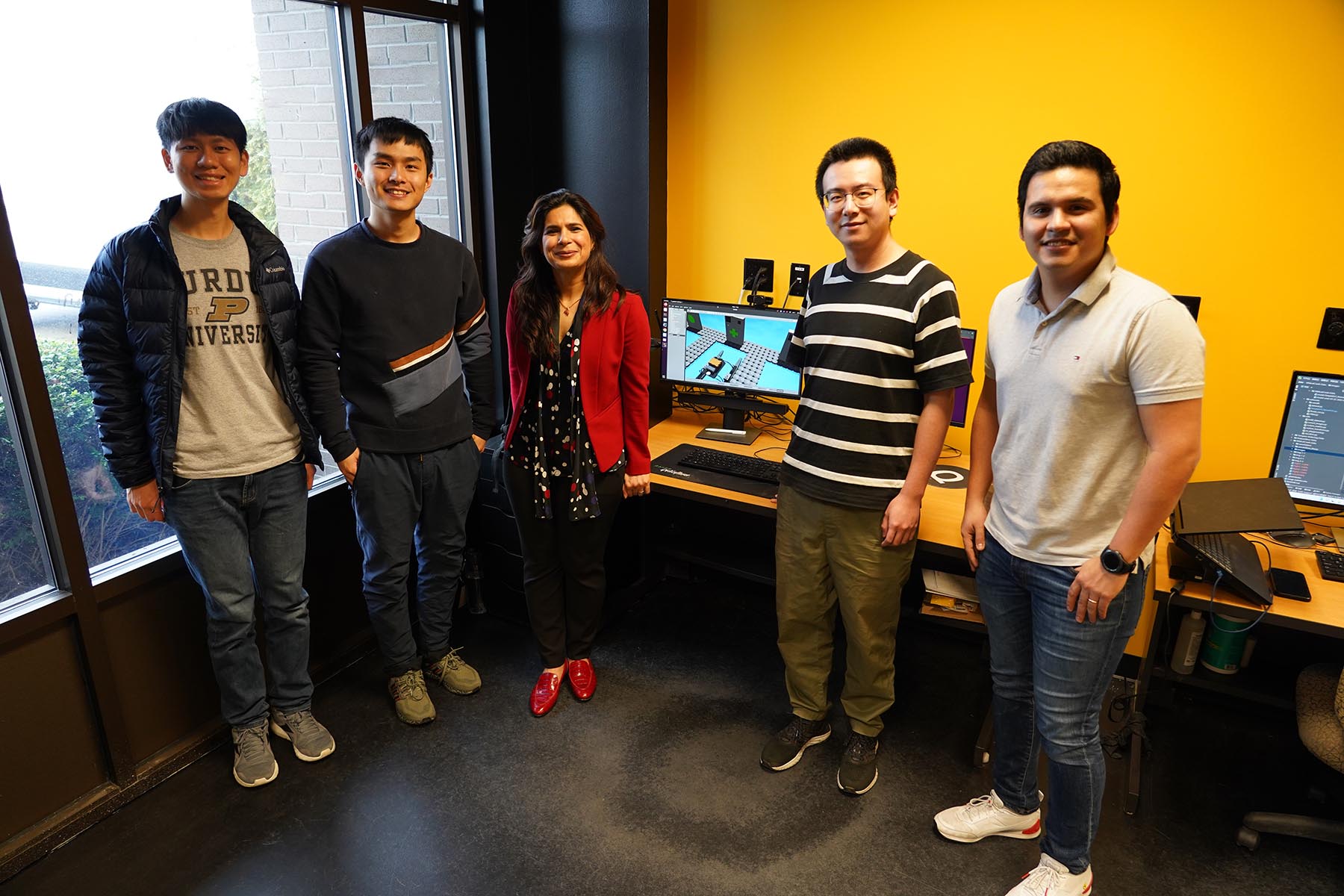Purdue wins virtual maritime robotics competition
“The goal of my research is to have persistent operation of robotics in challenging environments,” said Nina Mahmoudian, associate professor of mechanical engineering, who served as the team’s faculty co-advisor alongside associate professor Mo Rastgaar of Purdue Polytechnic Institute. “We work with land, sea, and air: aerial autonomous systems, surface and underwater systems, and ground-based systems.”
Mahmoudian’s team has placed real-world maritime robots in all sorts of challenging environments: from autonomously docking underwater, to silently gliding underwater for months at a time. Their next challenge, however, would be a virtual one.
VRX is an international competition organized by the nonprofit RoboNation, in conjunction with the Office of Naval Research (ONR), the Naval Postgraduate School (NPS), and Open Robotics (OR). University teams are given the same software platform, along with identical specifications for a virtual autonomous boat. They must program the boat to accomplish a series of tasks, such as navigating through a specific pattern of buoys, identifying and avoiding obstacles, docking to a floating platform, or shooting a virtual target. It’s a virtual version of their RobotX competition, in which real maritime robots complete these challenges on a real body of water.
It’s not as easy as it sounds. “The virtual environment has the same disturbances as a real maritime environment, like waves and wind,” said Jianwen Li, a PhD student in mechanical engineering. “We have to design a controller that does wayfinding and stationkeeping, using a fusion of virtual cameras and sensors to identify and localize those obstacles.”
Mahmoudian’s team worked for months on the simulations. When they felt confident in their code, they submitted a package to the competition. Then, all they could do was sit back and watch.
“The way this virtual competition works is very interesting,” said Mahmoudian. “After you submit your code, the competition board runs the code on their own computers, in a new environment. So not only did the students need to accomplish their tasks, they also had to incorporate adaptability and robustness, so that it would work in any environment.”
And they succeeded. The Purdue team placed top-4 in all six tasks, and finished first place in the overall competition, besting 32 teams from eight countries on four continents. “I am very proud of our students, especially considering this our first time competing. It shows how well our students work together. We want to continue competing, welcome more students to our group, and eventually participate in the real-world maritime RobotX competition."
“We learned a lot from this competition,” said Li. “We will use this experience. There are techniques I learned from this that we will use in our real-world research projects.”
“Maritime autonomy is not an easy task,” said Mahmoudian. “But it has great potential, not only for naval applications, but also for water management, water safety, and environmental study. These are real problems that have real implications. This competition provided us confidence that we can tackle those bigger challenges.”

Writer: Jared Pike, jaredpike@purdue.edu, 765-496-0374
Source: Nina Mahmoudian, ninam@purdue.edu
